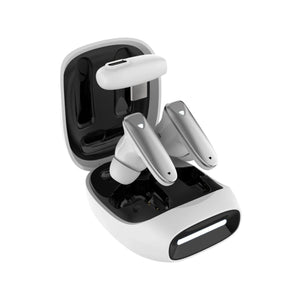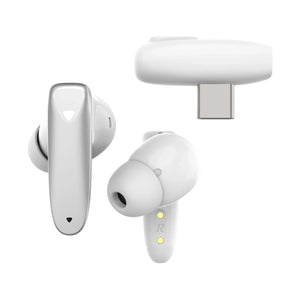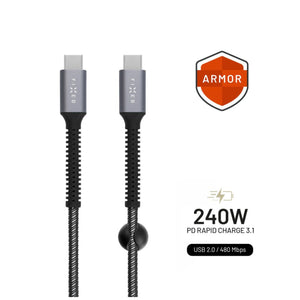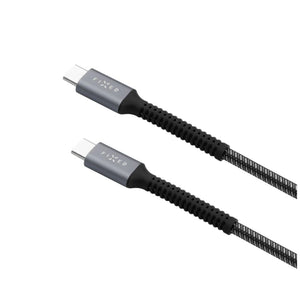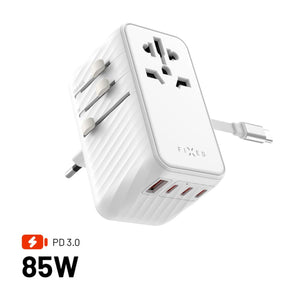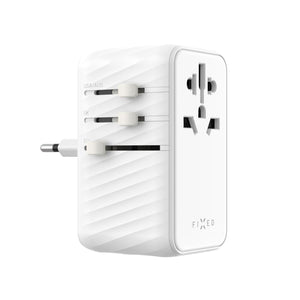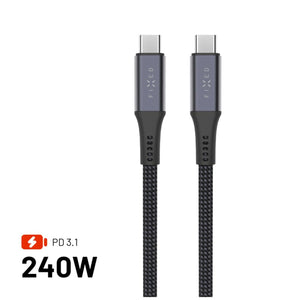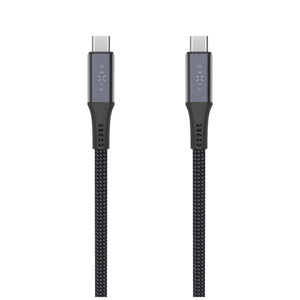USB-C, mAh, Smart Charging or even Qi. Are you planning to buy a new charger for your mobile phone, laptop or tablet, but are you dizzy from all the terms mentioned in the product information? Don't worry, we'll make them clear to you in a moment.
They look complicated at first, but when you learn what they mean, you'll think, “Is it really that simple?” After reading this article, you'll be a pro at basic charging concepts.
Adapter (rechargeable)
The adapter (in common parlance it is called a charger or a charging adapter) is the alpha and omega of the entire charging process , without it the electrical energy would not be able to flow from the electrical network to your mobile phone or laptop. In short, it is a device that "forwards" electricity from the socket to individual devices - in addition to mobile phones and laptops, it can also be smart watches or tablets. You can meet not only charging adapters, but also network or cable ones.
TIP: Did you know that in our offer you can find a lot of charging adapters for different devices and with a lot of functions?
Voltage (V)
Your primary school teacher must have already told you about tension. So just to remind you: this physical quantity (denoted by the letter V) is used to describe the electric potential between two points in an electric circuit. If you are not the technical type, in relation to charging it will be enough for you to know that the higher the voltage, the faster your device will charge. Of course, other factors also affect the charging speed.
Current (A)
Current is also discussed in physics classes. We measure it in amperes (A) and it determines the flow of electrical charges through a conductor or circuit. In addition to the charging speed, the current also affects the life of the phone's battery - if the current was excessively high, the battery would overheat.
watts
Are you wondering what the power of the charger is? Therefore, look for the capital letter W (symbol for watt) in the product information, according to which you can find out the speed of energy delivery. The more watts the adapter has, the faster your device will charge.
INTEREST: Do you know that the performance of the charger is the result of a combination of voltage and current?
Charge cycle
The charging cycle is often frowned upon among electronics experts, but don't look for anything complicated behind it. One charge cycle corresponds to one full charge and discharge of the battery.
EXAMPLE: In the morning, your mobile phone is completely discharged (battery level 0%). So you put it on the charger, and as soon as the battery is charged, you disconnect the mobile phone. When the battery is discharged again, one charge cycle will be completed.
Waste heat
On the other hand, heat loss is not talked about much, although it is an important concept. Imagine the energy under it that is lost in the form of heat during the charging process . The more heat energy is lost during charging, the less energy your mobile phone or laptop will receive (i.e. the charging efficiency will decrease).
Energy efficiency
Not all of the energy that flows through the charger to the device ends up being stored in the battery. So how to find out what is the ratio between the delivered energy and the actual stored energy in the battery? It is determined by the so-called energy efficiency, most often given in percentages (otherwise, adapter manufacturers refer to it as low, medium and high).
TIP: When you buy a new charger, be sure to pay attention to the energy efficiency - the higher the value, the better.
milliampere hour (mAh)
Whether you're buying a mobile phone, computer, tablet or any other device, don't overlook the mAh (milliampere-hour) label. It expresses the capacity of the battery and tells you how much electricity the battery can provide in one hour .
RECOMMENDATION: Are you choosing a mobile phone and think that it has a suspiciously low mAh value compared to other phones in the same price range? If you want the best possible battery, then avoid such a mobile phone.
Fast charging
Nowadays, users (and not only) of mobile phones place more and more importance on the charging speed of their device. And so it's no wonder that fast charging technology, or Fast Charging in English, was created. If fast charging is supported by the charger and the device itself, the battery can be recharged many times faster. This is useful, for example, if you forget to charge your mobile phone or laptop and at the last minute you need to get at least a few percent of the battery.
Smart Charging
You may be familiar with the term Smart Charging in connection with electromobility, but it is also important in the field of consumer electronics. It is an intelligent technology that optimizes the charging process of electronic devices according to their current state and also depending on external circumstances.
EXAMPLE: If you are charging a laptop, Smart Charging can optimize charging according to the available current. When the current is stronger, the device charges faster. As soon as the current weakens (perhaps due to a heavy load on the electrical network), the charging of the laptop will also slow down.
USB
If you use any kind of electronics, you will definitely not miss USB. It is a standard port (interface) that can be used to connect different devices. Thanks to the USB cable , you can connect the mobile phone to the charger , but it can also be used to connect the computer and printer or to download photos from the camera to the computer.
USB-C
The principle of operation of USB-C is the same as in the case of classic USB. Physical appearance and port design aside, the main difference is that USB-C allows for faster data transfer and faster charging than regular USB . In the future, you will encounter it more and more often, because in EU countries all manufacturers will have to supply it to consumer electronics. Thanks to this, you will be able to charge all your devices with one cable.
INTERESTING: USB-C charging is also used, for example, by the new iPhone 15. Apple introduced this port in its newer mobile phone, among other things, because it will soon be required by EU regulations.
PD adapter
Adapter PD refers to chargers that support the Power Delivery standard (hence the abbreviation PD), enabling fast charging via USB-C . These adapters are designed to have better performance than classic USB chargers and to be able to charge different types of devices.
Wireless charging
Charge your mobile phone without a cable? Of course it's possible. The term wireless charging is used for the method of recharging a phone's battery by placing the device on a charging pad . Thanks to the action of the electromagnetic field, energy starts to be transferred from the pad to the battery in the mobile phone. Impressive, right?
We wrote more about wireless charging in this article .


